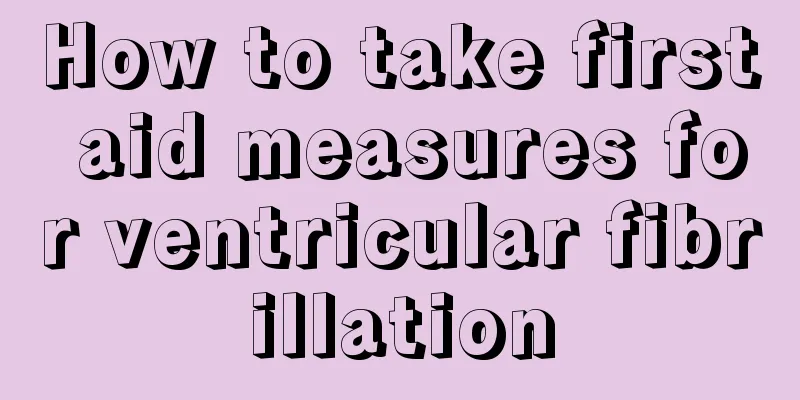What is the best medicine for burns?

|
Burns by fire are not like burns by boiling water. The wound will turn black after being burned by fire. This is generally caused by necrosis of epidermal tissue cells. If the burns by fire are handled properly, it will not cause wound infection and will not leave scars. There are many ointments for burns by fire. The specific ointment to use needs to be determined according to the severity of the burn. It is best not to use medicine blindly. How to deal with burns caused by water or fire In case of burns, do not panic or rush to take off thin clothes such as sweatshirts and stockings. Rinse with cold water immediately. Wait until it cools down before you can carefully take off your underwear to avoid tearing the blisters formed by the burn. The purpose of cold water flushing is to relieve pain, reduce exudation and swelling, and thus avoid or reduce blister formation. The flushing time should be about half an hour or more, until you no longer feel pain when you stop flushing. The general water temperature is about 20℃. Avoid using ice water to avoid frostbite. If the burn is on your fingers, you can also take a cold water bath. Cold compresses can be used on areas such as the face that cannot be washed or bathed. After cold water treatment, wipe the wound dry, then apply a thin layer of blue oil hydrocarbon, green ointment or other ointment medicines, and then bandage it appropriately for 1 to 2 days to prevent blisters. But the face can only be exposed and does not need to be bandaged. If blisters are formed, you can use a sterile syringe to suck out the water or cut a small hole to release the water; if the blisters are broken, wipe them dry with a sterile cotton ball to keep them dry and prevent the water from accumulating into lumps. After a burn, avoid applying gentian violet or mercurochrome to avoid affecting the observation of changes in the wound. Large or severe burns should be sent to the hospital immediately after general emergency care at home. In case of skin burns, pay attention to keeping the wound clean and dry, and avoid soaking it in water again after rinsing with cold water. The wound will dry after about 2 to 3 days. There is no need to apply medicine at this time. The scab will fall off and heal in about 10 days. If it does not heal by then, you should ask your doctor to see if it is due to a deep burn or infection. Antibiotics are generally not used after burns. If the wound is still red and swollen and the pain increases after 1 to 2 days, there is suspected infection. Treatment should be sought under the guidance of a doctor to avoid unnecessary pain. The principle of treating burns caused by water or fire is to first remove the heat source, quickly leave the scene, and use various fire-fighting methods, such as immersion in water, pouring water, lying down and rolling on the spot, immediately taking off or cutting wet clothes, pouring water, and soaking the limbs in cold water until the pain disappears. You can also cover the injured area with a wet towel or sheet and spray cold water on it. Do not break any blisters. Burns caused by water or fire can be divided into first-degree burns (erythematous, the skin becomes red, and there is a burning and stinging sensation), second-degree burns (blistering, blisters appear on the affected area), and third-degree burns (necrotic, skin peeling off). For mild burns on a small local area, you can treat it at home. After cleaning the wound, you can apply Jing Wanhong, Meibo moisturizing burn ointment, etc. For large-area burns, it is advisable to send to the hospital for treatment as soon as possible. The most important thing for burn wounds is to shave the hair in the injured area and the vicinity, and cut off excessively long nails. Wash the healthy skin around the wound with soap and water, and then wipe and disinfect it with 0.1% Sanisol solution or 75% alcohol. The wound surface is cleaned with isotonic saline to remove foreign matter, dirt, etc. Protect small blisters from being damaged. For large blisters, use an empty injection needle to draw out the blister fluid, or cut them at a low position to release the blister fluid. For broken blisters or those with severe contamination, the blister skin should be cut off, the wound surface should be gently rolled open with gauze, covered with a layer of liquid paraffin gauze or a thin layer of vaseline gauze, plus multiple layers of absorbent gauze and cotton pads, and bandaged with a bandage to apply even pressure. Burns can also be treated with bandage therapy, exposure therapy, etc. Burns are often prone to infection, so antibiotics should be used and tetanus antitoxin can also be injected. After a burn or scald accident occurs, following the steps below can minimize the harm of the burn or scald and promote recovery. 1. Get away from the source of injury: Once a flame burn occurs, you should leave the fire scene quickly, take off your clothes as soon as possible or roll on the ground to put out the flames, or wrap the injured person with a thick blanket to extinguish the flames; in case of hot liquid scalds, you should immediately take off the soaked clothes and rinse with clean cool water to cool down; chemical burns should be rinsed with plenty of clean water for a long time to reduce the extent of the burns. 2. Generally, no special treatment is required for the wound surface, and colored topical medications such as mercurochrome should not be applied. Because some of these drugs can cause poisoning when absorbed through the wound, it also affects the doctor's judgment and treatment of the wound depth. The correct estimation of the wound depth and area is the key to burn treatment. For emergency treatment after injury, it is best to cover or bandage it with a clean dressing or clean sheet. For small burns, the wound can be immersed in cold water at 8 to 10 degrees Celsius. This can reduce tissue metabolism and continued damage to the tissue by residual heat, and has a good analgesic effect. 3. After simple treatment, send to the hospital immediately, where a specialist will make an accurate assessment of the wound and provide further treatment to avoid infection that may deepen the wound and also to avoid life-threatening consequences due to delayed rescue. |
<<: Sneezing and runny nose in autumn
>>: What to do if you feel itchy during the recovery period of a burn
Recommend
What are the symptoms of prostate cancer?
Prostate cancer is a cancer that men are very con...
What to do if you choke while eating after laryngeal cancer surgery
Patients with laryngeal cancer will experience so...
What to eat to detoxify formaldehyde poisoning
After people finish decorating their houses or pa...
How do patients with nasopharyngeal cancer exercise
The main treatment for nasopharyngeal carcinoma i...
What to do if you are short due to genetics
Height is a hard indicator for many professions. ...
How many minutes should I take the temperature under my armpit?
When a person catches a cold or is infected by a ...
Can deafness caused by nasopharyngeal cancer be restored?
Can deafness caused by nasopharyngeal cancer be r...
Crazy bug eaters
One of the most surprising things I heard recentl...
Early symptoms of nasopharyngeal carcinoma brain metastasis
What are the early symptoms of nasopharyngeal car...
What is the reason for slow sobering up
Some people's faces turn red after drinking, ...
My tongue hurts like a needle
People rely on their tongue to taste the flavor o...
Efficacy and function of folic acid tablets
Folic acid tablets are mainly drugs extracted fro...
What are the Chinese patent medicines for treating nasopharyngeal carcinoma
What are the Chinese patent medicines for treatin...
What is the difference between a frost refrigerator and a frost-free refrigerator
The refrigerator is a tool for storing food that ...
What foods can cause food poisoning? Be careful of these 9 foods
Food poisoning is a common occurrence in daily li...









